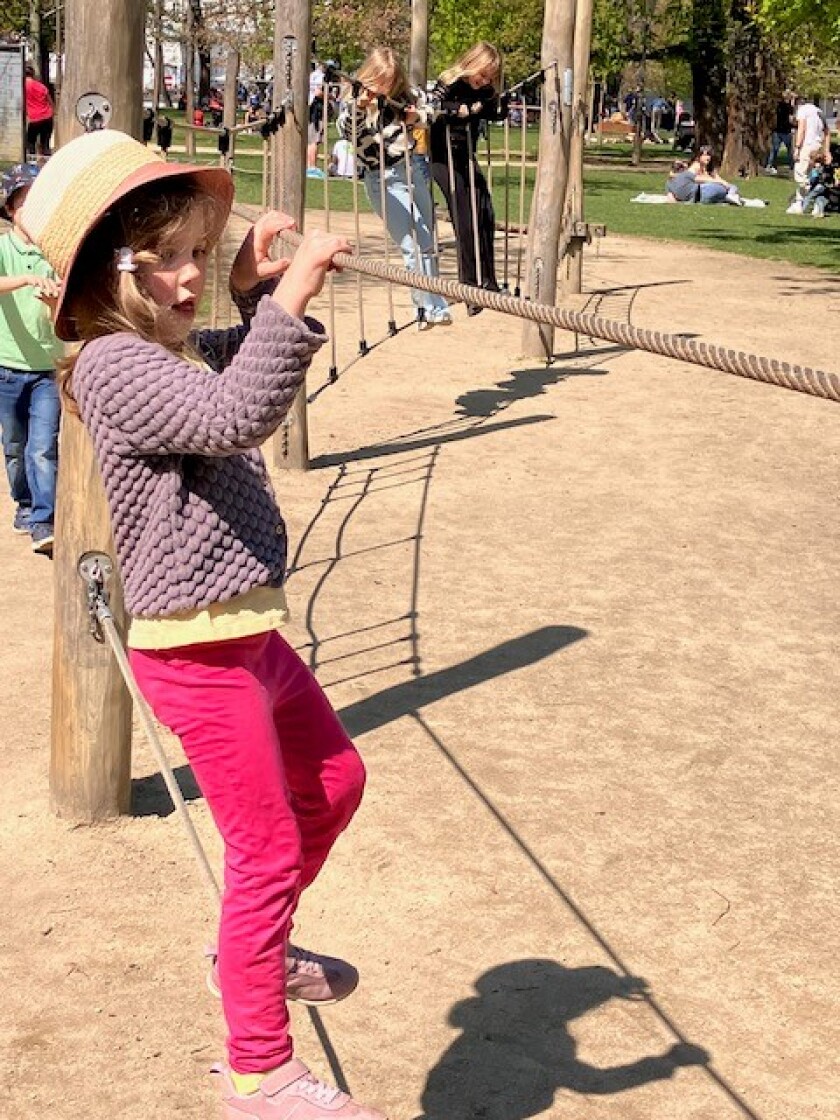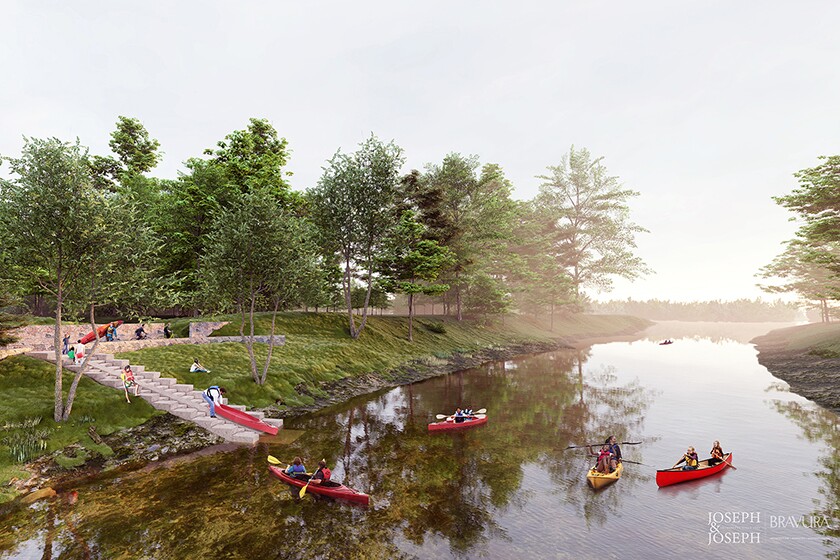But in the year and a half I’ve been taking our five-year-old daughter to a playground here in Prague, near the Vltava river in the Czech Republic, I’ve never seen any child get hurt on this contraption. And so our daughter uses it, while I watch nervously. The playground has other fear-inducing devices, at least for a parent. There is a disc, with room for two or three children, set at an off-angle and rotating on its center. There is a spinning set of curved vertical tubes anchored to a climbing cage.
Playgrounds don’t get much infrastructure attention compared to roads, subways, bridges, power lines and even bike lanes. But they are an essential urban amenity. Every American city has them. The number nationwide has been estimated at more than 10,000, which I suspect is a low estimate. In a crowded city, the humble small playground, even without much open space, is incredibly important. We used to take a child to one in Brooklyn several times a week, sometimes more than once a day. In the suburbs, playgrounds aren’t used quite so much. Children can play in the backyard. But they are still an important part of the public realm.

The playgrounds are more adventurous and challenging in Germany and many parts of Europe, Rousakis told me. “It’s part of the American mythos that we are daring and cowboys. But that’s not how we raise our children here. In Europe they have a lot more tolerance toward the things that can happen in life. What can happen in a playground is not as threatening.”
As might be expected, liability is one reason American playgrounds are less adventuresome. Our legal system makes suing a person or institution for personal injury easier. In Europe, suing for personal injury is more difficult, and it’s assumed everyone has access to a doctor. A broken arm or a deep cut on a playground can be a financial disaster for a family in the United States, where health care is not guaranteed, and even insured people can end up paying large deductibles and fees. These and other factors shape playground design and parenting in general.
“The approach in Europe to child development is different,” says Rousakis. “In Germany, there is more emphasis on personal responsibility, more trust, and less fear around injury and abduction. So children are encouraged to play in a more freeform way, to climb where they feel like. Things are safe, but they are less prescribed.”
Even in Europe, officials have to certify public playgrounds as safe. And in Prague, most playgrounds now are built with rubber or another relatively soft material rather than the hard concrete I knew as a child. These standards allow more off the ground in the way of risk.

This subject of playground design fits into a larger conversation going on now about whether parenting has become over-protective, and the lives of children too restricted. The group called Free-Range Kids makes this argument assertively. For cities and states in America sympathetic to this point of view, the takeaway may be to gently push the boundaries of the acceptable, and not go with the first answer from a lawyer or manager as to what is allowable on a playground.
Overall, the more adventurous European playgrounds delight more than scare me. On sunny weekends we take our daughter to a playground on a small island in the Vltava river with an extensive ropes course for younger children. I could never imagine seeing it in the United States. The possibility for injury is there, to be sure, but so is the possibility for delight.











